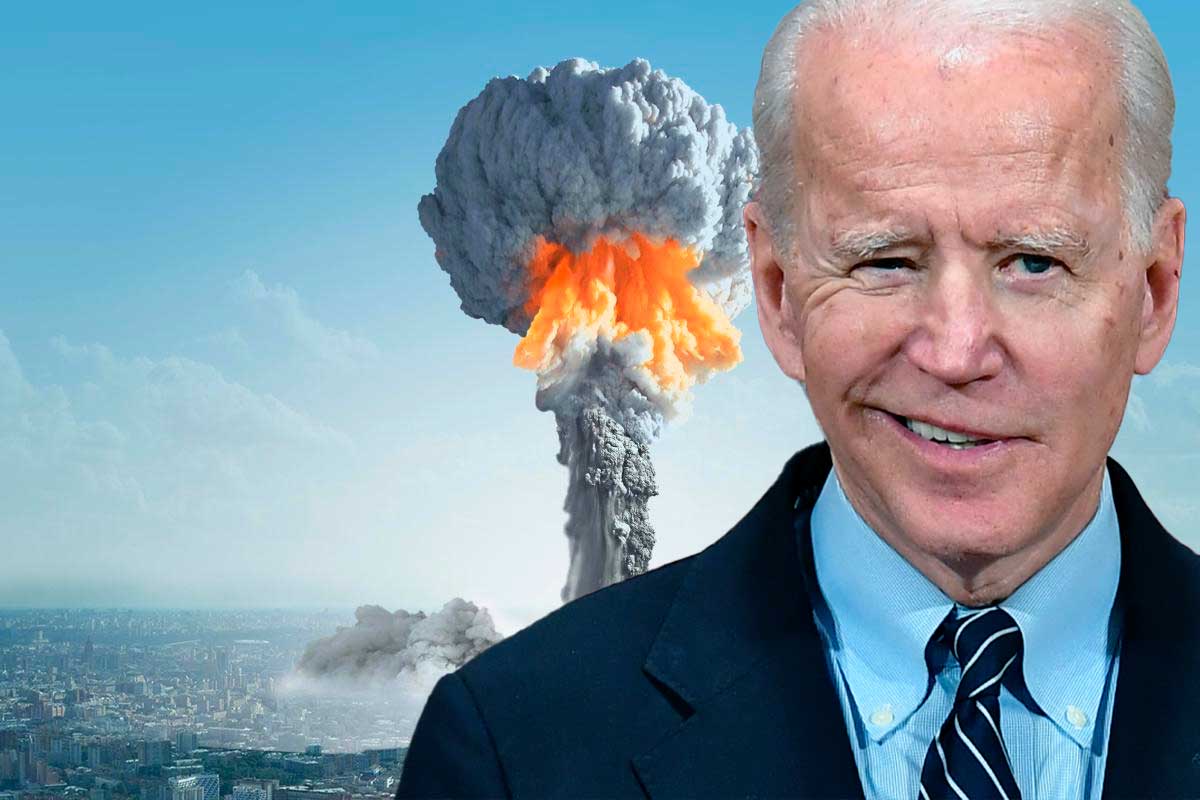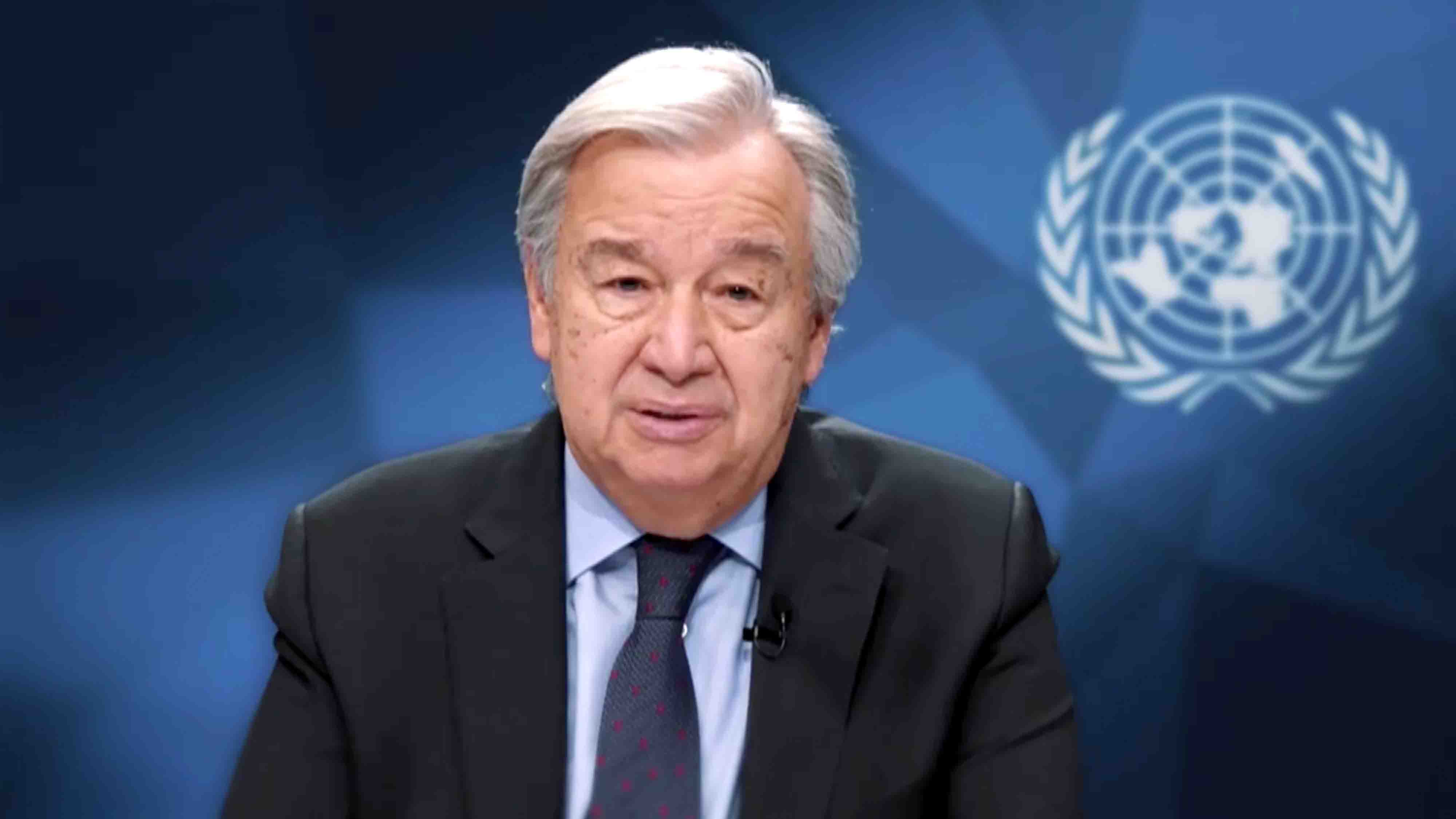
White House Says Plan, Approved Earlier This Year,
Was Not a Response to Any Single Country
Edward Helmore and Amy Hawkins / The Guardian
(August 21, 2024) — Joe Biden has approved a US nuclear strategy to prepare for possible coordinated nuclear confrontations with Russia, China and North Korea, according to a New York Times report on Tuesday.
On Tuesday, the White House said the president approved the plan earlier this year and it was not a response to a single country or threat.
The spokesperson Sean Savett said that while “the specific text of the guidance is classified, its existence is in no way secret. The guidance issued earlier this year is not a response to any single entity, country, nor threat.”
The Times reported that the deterrent policy takes into account a rapid buildup of China’s nuclear arsenal, which will rival the size and diversity of the US and Russian stockpiles over the next decade. The Russian president, Vladimir Putin, has threatened to use nuclear weapons in Ukraine.

China’s foreign ministry on Wednesday said that it was “seriously concerned” by the reports and accused the US of “stirring up the so-called ‘China nuclear threat theory’.” Mao Ning, a foreign ministry spokesperson, said that China had a “no-first-use” policy for nuclear weapons and said that the US was a bigger nuclear threat.
According to research by the Stockholm International Peace Research Institute, China had an estimated 500 nuclear warheads in January, up from 410 in January 2023. The US and Russia have more than 5,000 warheads each. But China’s arsenal is thought to be expanding at a much faster pace than any other country’s.
The US-based Arms Control Association said it understood US nuclear weapons strategy and posture remained the same as described in the administration’s 2022 nuclear posture review, and there had been no reorientation away from Russia and toward China.
Daryl Kimball, the executive director of the Arms Control Association, said that while US intelligence estimates suggested China might increase the size of its nuclear arsenal from 500 to 1,000 warheads by 2030, Russia currently had about 4,000 nuclear warheads “and it remains the major driver behind US nuclear strategy.”
Biden approved the revised strategy — called the nuclear employment guidance — in March, according to the Times, but an unclassified notification of the policy change has not yet been presented to Congress.
After years of nuclear arms reduction efforts, the administration has been signaling willingness to expand the US arsenal to counter China and Russia’s nuclear strategies more recently. In February, the US warned allies that Russia could be planning to put a nuclear weapon into space.
On Tuesday, a retired senior colonel in the Chinese People’s Liberation Army, Zhou Bo, published a piece in Foreign Policy arguing that the US and China could still cooperate on nuclear diplomacy. Zhou said that “it is impossible for Beijing to stand by idly” in the face of deteriorating relations between Russia and the US, but that there was space to strengthen the policies governing the control of nuclear weapons stockpiles.
Zhou argued that nuclear-armed states should declare a “no first use” policy, as so far only China and India have done.
On Tuesday, the Times reported that two senior administration officials had earlier been permitted to allude to the revision in US nuclear strategy without disclosing its existence.
In June, Pranay Vaddi, a senior director of the national security council, warned that “absent a change” in nuclear strategy by China and Russia, the US was prepared to shift from modernisation of existing weapons to expanding its arsenal.
Vaddi also alluded to the highly classified document, saying it emphasised “the need to deter Russia, the PRC [People’s Republic of China] and North Korea simultaneously.”
The last major nuclear arms control agreement with Russia, New Start, which sets limits on intercontinental-range nuclear weapons, expires in early 2026 with no subsequent agreement in place.
China and Russia are now more politically and economically aligned. Last month, Chinese and Russian long-range bombers patrolled together near Alaska for the first time and held live-fire exercises in the South China Sea.
The second US administration official permitted to refer to the document, Vipin Narang, an MIT nuclear strategist who served in the Pentagon, said earlier this month that Biden had “issued updated nuclear weapons employment guidance to account for multiple nuclear-armed adversaries” and for “the significant increase in the size and diversity” of China’s nuclear arsenal.
“It is our responsibility to see the world as it is, not as we hoped or wished it would be,” the Times quoted Narang as saying. “It is possible that we will one day look back and see the quarter-century after the cold war as nuclear intermission.”
_1659444171891_1659444254723_1659444254723.jpg)
Stopping the March to Nuclear War
Win Without War
(August 24, 2024) — “A nuclear war can never be won, and must never be fought.”
President Biden once said those words on the UN stage. Today, however, details of a dangerous new strategy are emerging, and The New York Times reports that “the president ordered US forces to prepare for possible coordinated nuclear confrontations with Russia, China and North Korea.” [1]
It’ll mean a marked acceleration of a nuclear arms race that only ends in disaster. Even a “small” nuclear war — where less than three percent of the world’s nuclear arsenal is deployed — would have apocalyptic effects. Millions would be killed on impact, followed by environmental destruction, famine, and more death in the fallout.
Avoiding this nightmare scenario has been a huge part of Win Without War’s work for years, and that’s why we’re racing to stop — and turn back — the Doomsday Clock. It looks like pushing the Biden administration back toward disarmament and away from this misguided strategy. It means influencing negotiations over a must-pass bill notorious for increasing the U.S. nuclear arsenal. It’ll require uplifting voices impacted by decades of nuclear testing to expand and reauthorize the critical lifelines they depend on.
Our success in this moment would be nothing short of avoiding what UN Secretary-General Guterres calls a “recipe for annihilation” — and we’re facing an uphill fight.
The world’s nuclear-armed countries currently hold the destructive power of 135,000 Hiroshima bombs. And with global tensions on a hair trigger, you wouldn’t be surprised that ALL nine nuclear-armed countries — the United States, Russia, the United Kingdom, France, China, India, Pakistan, North Korea, and Israel — are increasing their weapons spending. Experts expect the global nuclear stockpiles to grow as a result.
Last year, governments across the globe spent a combined $91.4 BILLION on nukes, but tell us: Do you feel safer?

We don’t, and Secretary-General Guterres agrees: “These weapons offer false promises of security and deterrence — while guaranteeing only destruction, death, and endless brinkmanship.”
We don’t have to tell you that with conflicts and crises deepening across the globe, this work is only getting more challenging, but the last thing that will build security is more bombs. It’s time to change course from an arms race to the bottom.
In the coming weeks, we need to bring people impacted by nuclear testing to DC to speak truth to power, drown out the weapons lobby’s calls for more unnecessary weapons, and remind decision-makers that we all deserve and want a world free from the threat of nuclear war.
With President Biden’s new strategy as a launch point, Congress is even more likely to push the world closer to doomsday by pouring BILLIONS of dollars into apocalyptic nuclear weapons — unless our crucial campaign to pull back changes the game.
Our team is sprinting to stop one of the biggest expansions of nuclear weapons in YEARS.
Despite every signal imaginable reminding us that this is one more moment where reducing nuclear stockpiles would serve us better, and with massive public support for disarmament, the Biden administration and Congress could further entrench a failed status quo that pushes us closer to a moment of global catastrophe: Midnight on the Doomsday Clock.
But with your help, we will not only pause the dial, we’ll start to pull it back.
Thank you for working for peace,
The Win Without War team
Footnote
1. The New York Times, “Biden Approved Secret Nuclear Strategy Refocusing on Chinese Threat”